Want a luscious green lawn come next spring? Or maybe you want to maintain the appearance and health of your new lawn? If so, you need to get ahead of the game by preparing your grass ahead of winter with autumn lawn care.
Autumn is a crucial season for gardeners who must take advantage of the weather conditions September and October provide to keep their grass strong for winter.
In this blog, we explore all aspects of autumn lawn care, covering the steps you need to take and offering helpful advice to make the process as easy as possible. Trust us, you won’t want to miss this!
Jump to:
1. Mowing and trimming
Continue to mow your lawn as normal through September, although you’ll need to do this less as temperatures get cooler and the days become shorter – once every two weeks should be fine.
Come October, you shouldn’t be cutting your grass as frequently or trimming it too short as grass growth will be slowing – late October/early November should be your last cut of the year.
You can mow your lawn without trimming the lawn too short by raising the height of your mower blades to up your cutting height. To address your lawn edges during this time, use a half-moon edging iron to achieve a neat finish. You should keep the grass to about two centimetres tall for the next job: scarifying.
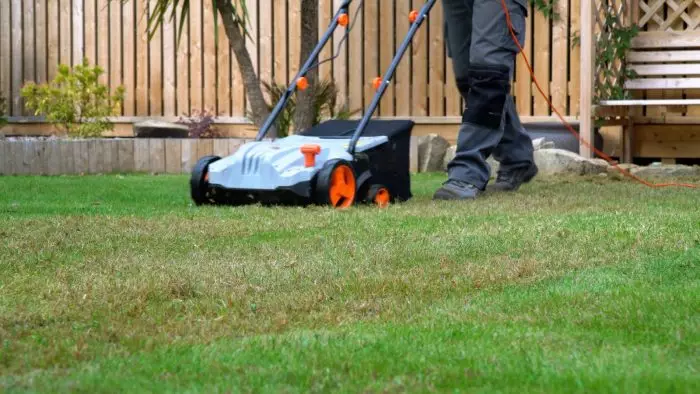
2. Scarifying
Scarification, also known as raking, removes any built-up dead grass, moss and roots from your lawn, as they can suffocate and stress the grass plant. Neglecting your raking duties can lead to a build-up of thatch and moss, negatively impacting the overall health of the lawn.
Before scarification, clear any fallen leaves from your lawn – you can add the collected autumn leaves to your compost heap if you have one.
Then, begin scarifying – use a regular spring tine rake or an electric scarifier to remove dead grass roots, moss, and thatch. However, we highly recommend using an electric scarifier to make this process easier, especially if you need to remove dead moss.
Scarify your lawn vigorously to remove moss effectively. You might be surprised at how much debris comes out of the grass when scarifying, but this is actually a good thing as it will allow your lawn to absorb more water and nutrients throughout autumn and winter.
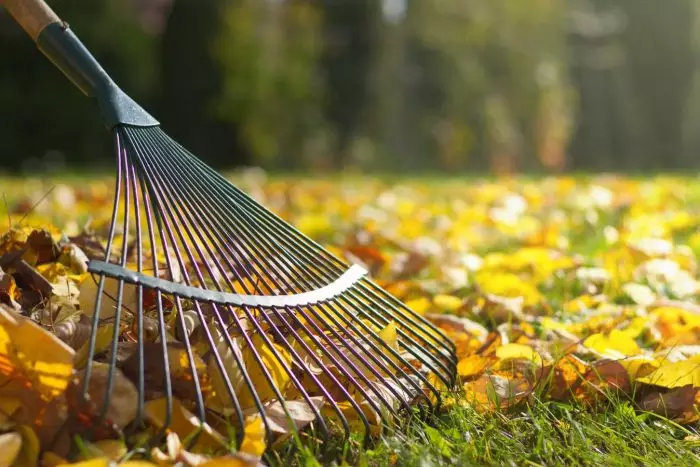
You might be surprised at how much debris comes out of the grass when scarifying. Do not let this discourage you as it will allow your lawn to absorb more water and nutrients.
3. Aeration
Aeration increases air circulation and water movement around the lawn’s roots – aeration is important as it encourages root growth and improves drainage, allowing your lawn to grow thicker and healthier. This step is especially vital if your lawn experienced frequent use in summer, causing compaction – the compression of soil that reduces the amount of moisture and air it can hold.
Aerating your lawn can be done with a garden fork. Press the garden fork into your soil as far as possible and slightly lean back. You’ll see the earth move slightly.
Alternatively, if you have a large lawn or clay soil especially, you can use a hollow tine aerator to remove cores from the lawn and create much wider holes. You can even purchase boots with spikes on them!
Tip – drop Envii Active Lawn into the holes made to improve aeration even more. As the pellets break down they will encourage earthworm activity in the clay soil, boosting strong and healthy root growth.
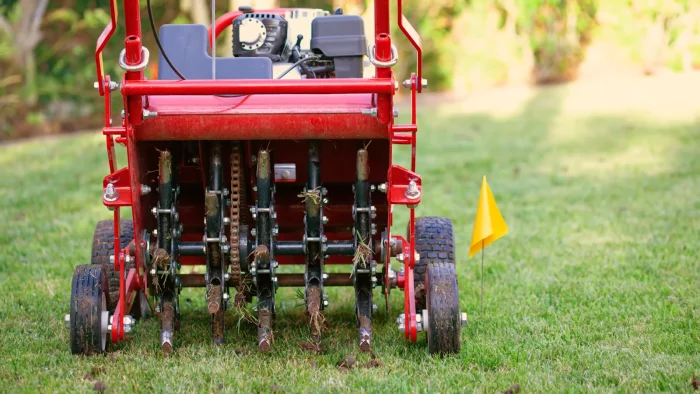
4. Top Dressing
If you wish to go the extra mile on your lawn this early autumn, you can top dress your grass. Working with top dressing will enrich your soil and promote green and strong grass growth by providing beneficial organic matter – this matter acts as lawn feed, aids drainage and helps to break down thatch.
Top dressing comes in a variety of materials. It can be compost, soil and sand, but a good rule of thumb is to use a mix of sand and loam.
In this example, we’re using a sand and compost mix – you can mix Envii Active Lawn in with the top dressing to condition your soil further.
Top dressing is easy to do – just spread the material across the surface of the grass and work it down into the holes created during the aeration process. This can be done with a rubber rake or a soft broom.
But, be careful not to apply too much top dressing as this can smother the grass and damage the leaves!
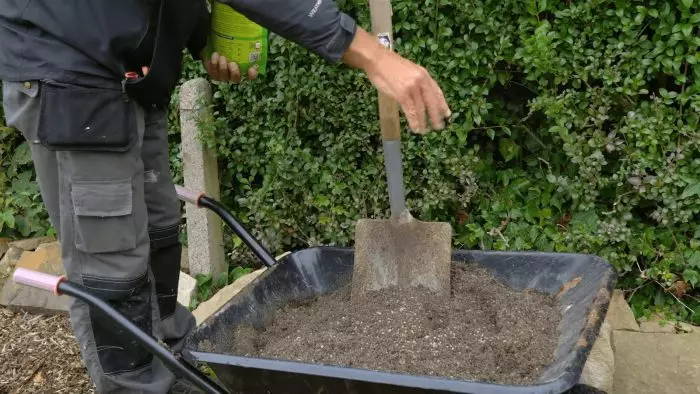
5. Reseeding and overseeding
Autumn is a great time to regenerate your lawn by reseeding patchy areas and overseeding the whole lawn to improve its appearance.
To do this, select a lawn seed that suits your needs. Coarser varieties will provide good weather tolerance, whereas finer varieties will help to create a luscious appearance.
For the best results and to make your life easier, mix your grass seed in with the top dressing or disperse the seed evenly over the lawn. Most lawns should benefit from about 30-40 grams of seed per square metre of grass while ensuring the seed gets good contact with the soil.
You should also keep your grass watered until the seeds are germinated to establish a healthy lawn come springtime.
Wait for your seeds to germinate and grow to at least 5 to 7 cm before completing the next step.
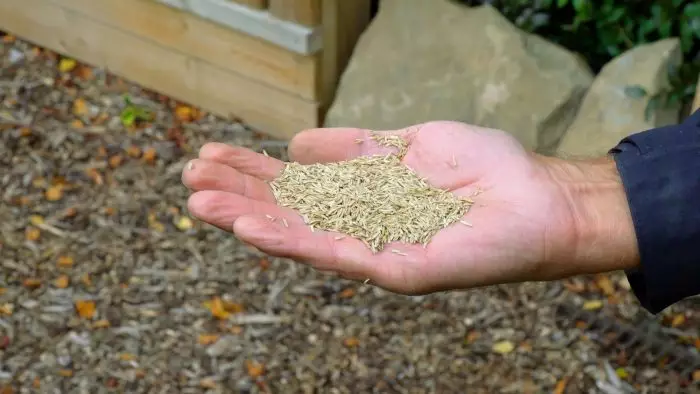
6. Apply an autumn lawn treatment
The final stage of your autumn lawn care is to apply an autumn lawn treatment or feed once overseeding is complete. Apply a product such as Activelawn, if you haven’t done so already, to increase aeration and drainage in your lawn while minimising moss growth and breaking down dead thatch.
Lastly, apply an autumn lawn feed that focuses on strengthing the grassroots rather than improving the colour of the lawn. By following these steps you will reduce the risk of dealing with harmful winter diseases such as Fusarium. Fusarium, also known as snow mould, can cause unsightly brown patches throughout your lawn – which you want to avoid!

Tips to keep in mind come late autumn and winter
It’s worth bearing in mind the following:
– Keep weeding up until winter hits to reduce root competition for soil nutrients.
– Remove garden furniture sitting on your lawn in autumn as it adds further stress to your grass.
– Don’t walk on frozen grass during winter as it could leave marks – to avoid this, you could consider laying stepping stones to protect your lawn from foot traffic.
– Get your lawn mower serviced before spring, as it won’t be required throughout the winter.
By following the advice in this blog, your lawn should successfully battle the strains winter brings and look exceptional come springtime.

Related Products
-
 New in
New in
Envii Active Lawn
£19.99Lawn and soil conditioner improves aeration and reduces moss.Add to Basket -
 New in
New in
Envii Patch Repair
£10.993 in 1 grass seed mix to help repair patches on lawns caused by dog urine.Add to Basket

 Call us on 01246 240880
Call us on 01246 240880 Free 48hr Delivery
Free 48hr Delivery Sign-up and receive 10% off
Sign-up and receive 10% off